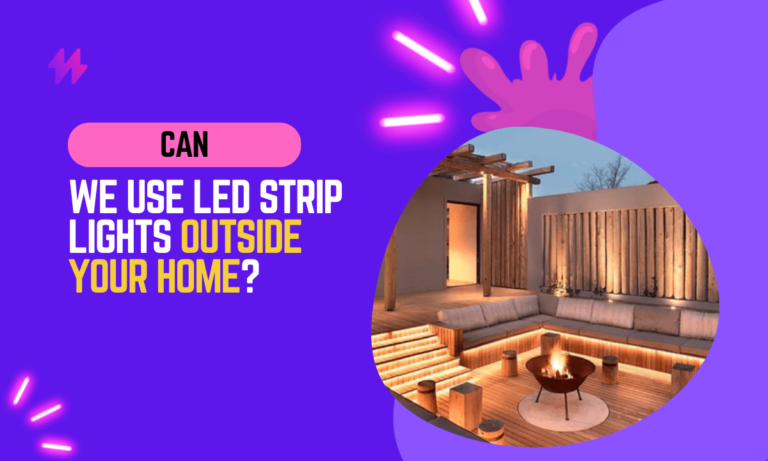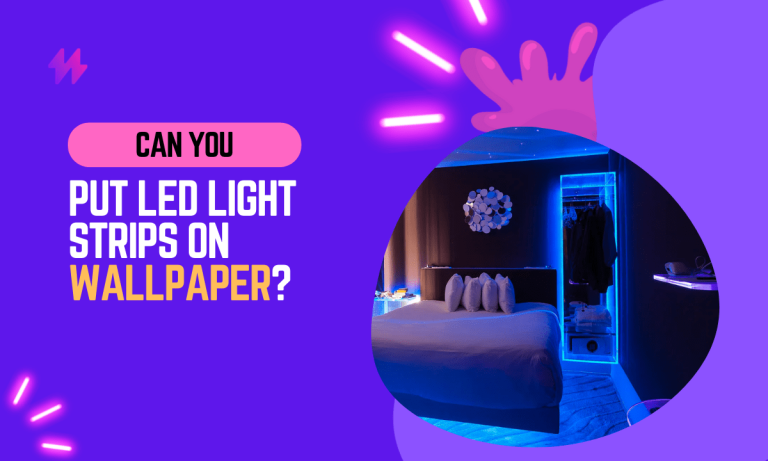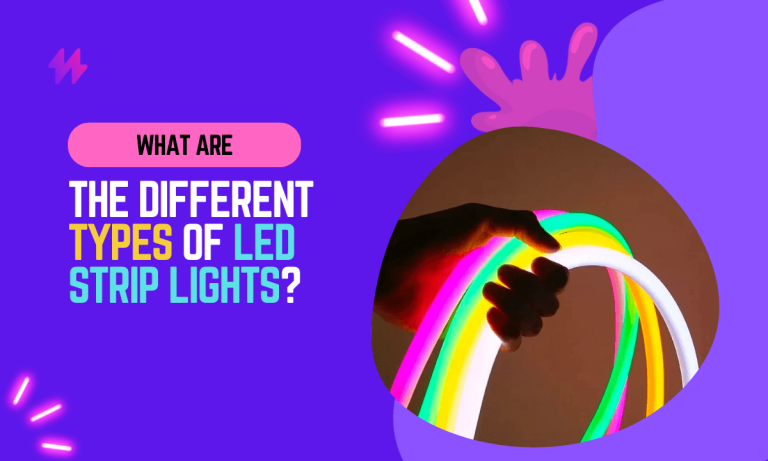How to Connect Multiple LED Lights To One Power Source
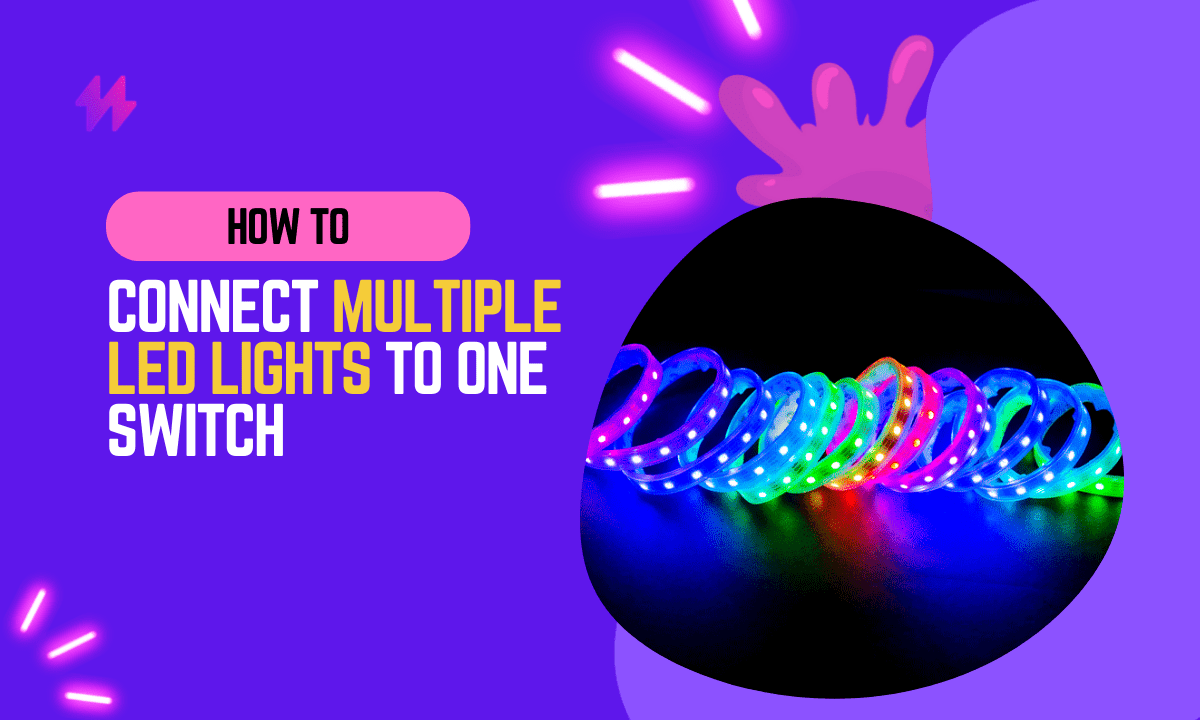
In today’s world, LED lights have become increasingly popular due to their energy efficiency, long lifespan, and versatility in various applications. Whether you’re decorating your home, setting up a lighting display, or working on a DIY project, connecting multiple LED lights to one power source can be a practical and convenient solution.
The purpose of this article is to provide you with a comprehensive guide on how to connect multiple LED lights to one power source.
To increase the efficiency of your LED lighting endeavors, utilizing a suitable power adapter is essential to accommodate the collective wattage of all connected lights. This allows for a cohesive lighting ambiance while preventing issues like short circuits or flickering due to overloaded power sources.
**How to Connect Multiple LED Lights to One Power Source: Benefits and Considerations**
Before we dive into the details, let’s briefly touch upon the importance of connecting multiple LED strip lights to a single power source.
- Simplicity and Convenience: By using a single power source, you eliminate the need for multiple power outlets or adapters. This simplifies the setup process and reduces cable clutter, making it easier to install and manage your LED strips.
- Cost-Effectiveness: Using one power source instead of multiple ones can save you money. You won’t need to purchase additional power adapters or cords, reducing your overall expenses.
- Synchronization: Connecting LED strips to a single power source allows for synchronized lighting effects. Both strips will receive power simultaneously, resulting in consistent color, brightness, and patterns across the entire installation. This synchronization creates a visually appealing and cohesive lighting display.
- Uniformity of Light: When powered from the same source, LED strips tend to have consistent performance characteristics. This means that the brightness, color temperature, and color accuracy will be similar across the connected strips, ensuring a uniform and balanced lighting experience.
- Scalability: Using one power source allows for easy scalability. You can connect multiple LED strips in parallel, expanding your lighting setup without the need for additional power sources. This flexibility enables you to customize your lighting design according to your needs and easily add or remove LED strips as desired.
- Energy Efficiency: LED strips are known for their energy-efficient operation. By connecting multiple strips to one power source, you can maximize the energy efficiency of your lighting system. It ensures that the power supply is utilized optimally, minimizing energy wastage and reducing electricity consumption.
- Ease of Control: When connected to a single power source, controlling and managing the LED strips becomes more straightforward. Whether you’re using a remote control, a wall switch, or a smart home automation system, you only need to operate one power source to control all the connected LED strips simultaneously.
Also read: How to Reset LED strip lights in 6 Steps
When connecting multiple LED strip lights, using appropriate power adapters can greatly enhance your lighting setup by ensuring each strip receives adequate power to function optimally. A singular power source that accommodates the total wattage of your LED installations will help maintain consistent brightness and avoid issues like voltage drop or uneven lighting.
Calculating Power Requirements: Essential Considerations for Multiple LED Lights
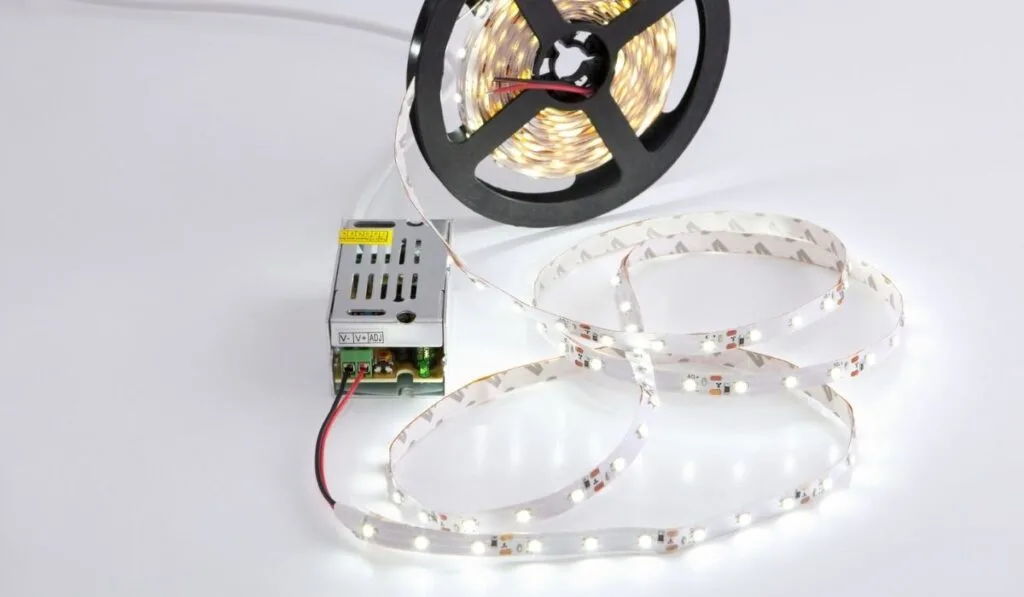
Calculating Total Wattage Needed for Your LED Light Connections
When connecting multiple LED lights to one power source, it’s crucial to calculate the total power requirement to ensure that the power source can handle the load. To determine the total wattage needed, follow these steps:
Identify the wattage rating: Each LED light strip or bulb typically has a wattage rating specified by the manufacturer. This rating indicates the power consumed by the LED light. Refer to the product specifications or packaging to find the wattage rating for each LED light.
Sum up the individual wattages: Add up the wattage ratings of all the LED lights you plan to connect. For example, if you have LED light strips with ratings of 6 watts, 8 watts, and 10 watts, the total wattage would be 6 + 8 + 10 = 24 watts.
You may also like to check Lumen to Watt Calculator to identify Wattage needed for your connection.
When working with multiple LED lighting setups, ensuring proper electrical connections is key for a successful installation. By carefully managing the power consumption of your LED systems, you can prevent unexpected power failures and achieve uniform illumination across all lighting configurations.
Calculate the Load Capacity of the Power Source for LED Lights
Once you have the total wattage requirement, it’s essential to ensure that your chosen power source can handle the load. The power source should have a higher wattage capacity than the total wattage of the LED strip lights to prevent overloading and potential damage. Here are a few factors to consider:
Check the power source rating: Look for the wattage rating of the power source or power supply unit (PSU). This rating indicates the maximum amount of power it can deliver. Make sure the power source has a wattage capacity higher than the total wattage requirement of your LED lights.
Consider safety margins: It’s advisable to leave a safety margin when selecting the power source. This additional capacity ensures that the power source operates within its limits and remains stable. A safety margin of 10-20% above the total wattage requirement is generally recommended.
For an effective lighting setup, using a solitary power source that matches the aggregate wattage of your LED strip lights is crucial in avoiding issues like illumination variance or inconsistent lighting. By integrating power splitters and ensuring stable power flow, you’ll achieve a dynamic lighting environment that enhances your LED projects.
Even Power Distribution for Multiple LED Lights: Best Practices and Techniques
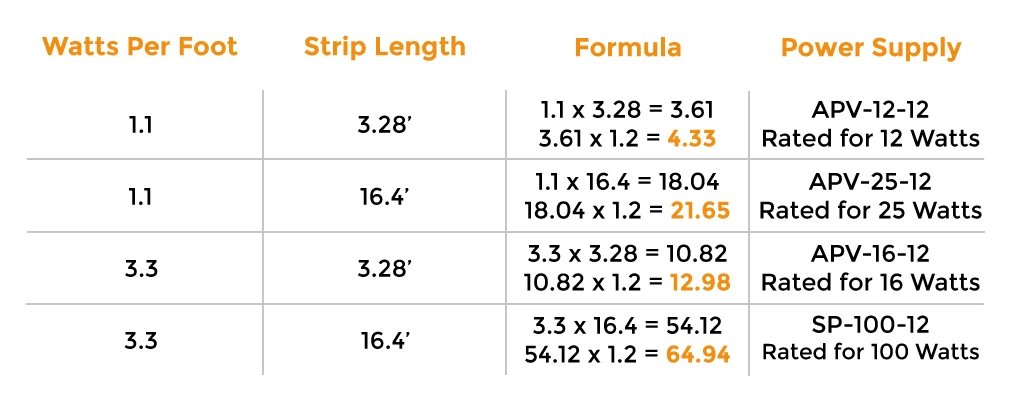
To prevent overloading individual LED lights and maintain balanced performance across the entire setup, it’s important to distribute the power evenly. Follow these guidelines:
Parallel connection: If you’re connecting LED light strips in parallel, each strip will receive the same voltage but will draw its own current. This means the wattage is divided among the strips evenly. Ensure that the power source can handle the total combined current drawn by all the LED strips.
Series connection: When connecting LED lights in series, the voltage adds up across the connected lights, but the current remains the same. Ensure that the total voltage required by the series connection does not exceed the voltage rating of the power source.
Remember to consult the manufacturer’s specifications for each LED light and the power source to ensure compatibility and proper distribution of power.
To ensure optimal functionality of multiple strip lights, it is essential to understand the power draw and distribution among the connected LEDs. Using an appropriate wattage power supply that aligns with the total wattage requirement of your LED configurations will help achieve a unified power strategy, ensuring consistent voltage distribution and preventing issues like irregular lighting.
Essential Components & Tools for Connecting Multiple LED Lights to a Single Power Source
To connect multiple LED lights to one power source, you’ll need the following components:
LED lights: Determine the number of LED light strips or LED bulbs you want to connect. Ensure they are compatible with each other and have the same voltage requirements for parallel connections or cumulative voltage requirements for series connections.
Power source: Choose a suitable power source based on the total wattage requirement of your LED lights. This could be a power supply unit (PSU), a transformer, or an AC/DC adapter. Ensure it provides the required voltage and has a wattage capacity higher than the total wattage of the LED lights.
Connectors: Depending on the type of LED lights and wiring setup, you may need connectors to join the LED strips or bulbs together. Common connector types include solderless connectors, screw terminals, or wire nuts. Choose connectors that match the wiring method and size of your LED lights.
Wiring: Select appropriate wires to connect the LED lights to the power source and interconnect the LED lights if necessary. Use wires with a sufficient gauge to handle the current and ensure low resistance. Consider using color-coded wires for easy identification and organization.
Resistors (if needed): In some cases, you may require resistors to regulate the current and voltage supplied to the LED lights. This is particularly important if the LED lights have different voltage requirements or if you’re using a higher-voltage power source. Refer to the LED light specifications or consult an electronics guide to determine if resistors are necessary.
To connect your RGB LED lights efficiently, ensure that the power supplies you choose are compatible with the electrical requirements of your setup. Employing additional power supplies or a single source with uniform voltage levels will significantly enhance your LED illumination and overall lighting effects, creating a stunning light show for any application.
Essential Tools for Connecting LED Lights: Recommended Wiring Process
- Wire cutters and strippers
- Soldering iron and solder (if applicable)
- Screwdrivers
- Multimeter
- Heat shrink tubing (optional)
- Electrical tape
Step-by-Step Guide: Connecting Multiple LED Lights to One Power Source
There are two ways to connect multiple LED lights to one power source. One is by making a parallel connection and another is a series connection.
When connecting multiple LED lights to a single power source, consider using a voltage regulator to ensure safe voltage levels are maintained for optimal performance. Additionally, employing LED splitters can streamline your LED arrangements, giving you greater flexibility in designing expansive lighting displays.
Wiring Multiple LED Lights in Parallel: A Comprehensive Guide

- Plan the wiring layout: Decide on the placement of the LED lights and how you want to connect them. Parallel wiring is commonly used when connecting multiple LED lights to a single power source.
- Cut the wires: Measure and cut the appropriate lengths of wire to connect each LED light to the power source. Leave some extra length for flexibility and ease of connection.
- Strip the wire ends: Use wire strippers to remove a small portion of insulation from the wire ends, exposing the conductive copper.
- Connect the wires to the LED lights: For each LED light, connect one wire to the positive terminal (+) and another wire to the negative terminal (-) of the LED light. Follow the manufacturer’s instructions for proper connection methods, which may include soldering, using connectors, or crimping.
- Connect the wires to the power source: Connect the positive wires from all the LED lights to the positive terminal of the power source. Similarly, connect the negative wires from all the LED lights to the negative terminal of the power source. Again, use appropriate connectors or connection methods as needed.
- Secure the connections: Ensure that all the connections are secure and tight. Use soldering, connectors, or other appropriate methods to create reliable connections.
Wiring LED Lights in Series: A Comprehensive Guide to Connecting Multiple Strips

- Plan the wiring layout: If you choose to wire the LED lights in series, determine the order in which they will be connected, considering the voltage requirements and limitations.
- Cut the wires: Measure and cut the appropriate lengths of wire to connect the LED lights in series. Take into account the cumulative voltage required for the series connection.
- Strip the wire ends: Use wire strippers to remove a small portion of insulation from the wire ends, exposing the conductive copper.
- Connect the wires in series: Connect one end of the wire to the positive terminal of the first LED light. Connect the other end of the wire to the negative terminal of the second LED light, and continue this pattern until all the LED lights are connected in series. Follow the manufacturer’s instructions for proper connection methods.
- Connect the wires to the power source: Connect one end of the remaining wire to the positive terminal of the first LED light in the series. Connect the other end of the wire to the positive terminal of the power source. Finally, connect the negative terminal of the power source to the negative terminal of the last LED light in the series.
Also read: How to replace Light Switch without turning off Power
When setting up your LED projects, it is crucial to consider the type of electrical source being used, as this impacts factors such as signal stability and overall voltage reliability. Ensuring that connectors/adapters are compatible and that the wattage of your power supplies meets the demands of your lighting strips will greatly enhance the luminosity and functionality of your LED strip installation.
Ensuring a Reliable Connection: Troubleshooting Common Issues with Multiple LED Lights
- Before powering on the LED lights, carefully inspect all the connections to ensure they are properly secured and there are no loose wires or exposed conductors.
- Turn on the power source and check if all the LED lights illuminate. Observe their brightness, color, and any lighting effects or patterns.
- If any LED lights fail to light up or behave unexpectedly, first check the connections and ensure they are correct and secure. Verify that the power source is providing the correct voltage and has enough capacity to handle the load. Use a multimeter to measure voltage and current at different points in the circuit to identify any issues.
- If adjustments are needed, disconnect the power source and make the necessary changes to the wiring or connections. Re-test the system after each adjustment to ensure proper functionality.
Final Thoughts on Connecting LED Lights: Maximizing Benefits and Power Efficiency
In conclusion, connecting multiple LED lights to a single power source efficiently requires a clear understanding of both the electrical requirements of the LED fixtures and the capacity of the power source. This process ensures that all connected lights receive adequate power without overloading the system, which can lead to reduced efficiency or potential damage. When planning your LED setup, calculating the total wattage of all the LED lights to be connected is crucial. This step ensures that the total load does not exceed the output capacity of the power supply, maintaining system safety and longevity. Moreover, considering whether to wire the LEDs in series or parallel is significant; parallel wiring is often recommended as it helps maintain a consistent voltage across each LED, ensuring uniform brightness and performance.
Additionally, using a centralized power source can simplify the installation and maintenance of multiple LED lights, especially in larger or more complex lighting arrangements. It is essential to use appropriate gauge wiring to handle the total amperage load, as well as to ensure all connections are secure and well insulated to prevent any electrical shorts or failures. Properly planning the layout and connectivity of the LED lights not only enhances the visual appeal of the lighting project but also contributes to energy efficiency and safety. By meticulously following these guidelines, one can successfully create a reliable and effective LED lighting system that operates smoothly from a single power source, adding both functionality and style to any space.
How To Connect Multiple LED Lights To One Power Source | Understanding the Basics of LED Lighting
Understanding the intricacies of LED lighting is essential for successful connections of multiple LED lights to a single power source. LED lights operate on specific electrical parameters, requiring an adequate electrical supply that matches the total wattage of the connected units. This often necessitates selecting components like an AC/DC transformer or multiple power adapters to ensure safe and efficient energy transfer. Proper LED wiring configurations, such as utilizing low-voltage cables and 4-pin connections for RGB strip lights, can simplify the wiring process and promote uniform light output. It’s crucial to consider factors like forward voltage and sufficient power from the electrical outlet to avoid inadequate power supplies, which can lead to inconsistent brightness levels and unnecessary re-wiring. Using tools like voltage meters can help monitor overall voltages, ensuring that the combined load from the LED luminaires does not exceed the power requisites of the adapter voltage for a functional lighting array. The goal is to create a reliable setup that delivers LED splendor while minimizing complex wiring and loose connections, ultimately enhancing your lighting project.
How to Connect Multiple LED Lights To One Power Source | What Are LED Lights and How Do They Work?
LED lights are innovative lighting solutions that rely on electrical components to convert electrical current into illumination. They operate on the principle of constant voltage, with each LED in a strip or array receiving a uniform supply of power. A successful LED configuration requires understanding the total wattage transcends and ensuring that the power source can handle the aggregate power consumption. For effective connection, utilizing a single outlet with quality LED splitters helps reduce excessive wiring and simplifies the wiring process, making it easier to achieve desired brightness and mood lighting.
The process of How to Connect Multiple LED Lights To One Power Source can be facilitated through various methods, including the use of electrical tape for securing connections and ensuring that each wire is appropriately soldered. Employing devices like led channel tracks allows for neat arrangements of lights, while connections to red LEDs or other colored bulbs can enhance the overall aesthetic. An inadequate power supply or adapter may lead to insufficient brightness, making it critical to gauge the power bus and choose the right components for large-scale installations. With the right electrical knowledge, creating intricate wiring can be transformed into a simpler task, paving the way for projects that revel in the brilliance of LED technology.
Benefits of Using LED Lights for Home and Commercial Use
LED lights have transformed the way we approach lighting solutions in both home and commercial settings. Their remarkable efficiency and low energy consumption make them a favorable choice for anyone seeking to enhance their electrical configuration. Understanding how to connect multiple LED lights to one power source is crucial for maximizing their benefits. The simplified wiring process allows for seamless integration of various lighting elements, such as lamps and LED strips, ensuring a unified source of illumination. Implementing led connectivity and using accessories like LED splitters and power-sharing devices can help manage multiple lighting fixtures with just one power source.
The brilliance of LED lights extends beyond their energy-saving capabilities. They deliver a luminous output that can elevate the ambiance of any space, whether it be a cozy living room or a bustling office environment. By using power sources compatible with LED technology, such as constant voltage power supplies, users can avoid issues like inadequate power adapters and poorly executed soldered connections. This fosters a strong electrical workshop setup where professionals can experiment with LED strip arrangements and gauge power bus layouts for optimal lighting. The application of LEDs not only provides extra light but also serves a practical purpose with minimal extra wiring, showcasing the marvels of modern electrical design.
Selecting the Right Power Source for Multiple LED Lights
Connecting multiple LED lights to a single power source involves understanding various power options such as aa batteries, plugs, and specialized splitters. For those embarking on an led strip project, using a led strip splitter can simplify the wiring process and enhance the electrical aspects of the setup. Whether you’re looking to use batteries for portability or plugs for more permanent installations, the goal remains the same: maximizing led brilliance while ensuring reliable power-sharing purposes. Considerations like the wattage needed for each lamp unit, the proper configuration of negative wires, and understanding how led array configurations can impact performance are key for any electrical connoisseur. By mastering these elements, the task of connecting multiple LED lights to one power source transforms from complex to manageable, empowering enthusiasts to create stunning displays of led marvels.
Types of Power Sources Compatible with LED Lights
One popular option for powering multiple LED lights is the use of an LED driver or transformer. This device converts the mains voltage to a lower current suitable for LEDs. Using an LED driver allows for a simpler wiring process, as it can handle multiple fixtures simultaneously. This flexibility makes it easier to connect a beacon or additional lighting, ensuring a seamless integration into your existing setup.
LED splitters reside as another effective solution for connecting multiple fixtures. These connectors enable numerous lights to be powered from a single source without sacrificing performance or brightness. Knowing how to connect multiple LED lights to one power source is essential for efficient installation. Properly choosing the right power source can enhance both functionality and aesthetics in any lighting design.
Factors to Consider When Choosing a Power Source
One crucial aspect of choosing a power source for LED lighting involves understanding the voltage and current specifications required by your LED lights. Each LED light has specific power requirements that should match the output of your power source to ensure optimal performance. Knowing how to connect multiple LED lights to one power source is essential for ensuring that you select an appropriate power source that meets total wattage needs without exceeding capacity limits.
The compatibility of your power source with LED splitters resides at the core of effective lighting setups. If you plan to distribute power to multiple LED lights, ensure that the power source can handle the cumulative load without causing flickering or damage. This means researching different types of LED splitters and their capacity to connect multiple lights efficiently while maintaining consistent voltage levels. Understanding these factors will guide you in selecting the right power source for your project.

